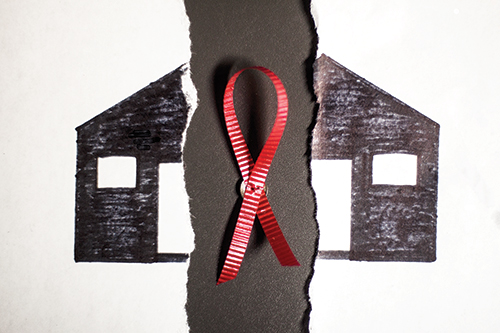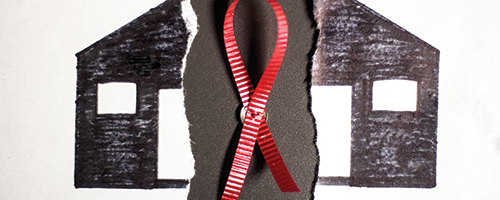Years ago I looked into purchasing home HIV tests at the request of a friend who wanted to test each new partner prior to engaging in sexual contact as an added precaution. That friend intended to use protection and normally required each new partner to get tested at a clinic but still saw some advantages to having a partner tested in this manner.
Getting tested at home

Years ago I looked into purchasing home HIV tests at the request of a friend who wanted to test each new partner prior to engaging in sexual contact as an added precaution. That friend intended to use protection and normally required each new partner to get tested at a clinic but still saw some advantages to having a partner tested in this manner.
In that friend’s mind, when bringing a new partner home, the two could agree to get tested together and then wait just a few minutes for their mutual results, perhaps while enjoying a glass of wine or two.
As a strong proponent of frequent testing regardless of the number or nature of the relationship(s) a person might be in, I applauded the idea and was disappointed to find that it wasn’t possible to get the rapid, same-day test ordinarily done during a clinic visit for home use. So I was thrilled when home HIV tests started becoming more widely available in the past few years.
You can now go online and purchase a couple different types of these tests, including ones where you send in a cheek swab and wait for results. The most recent arrival on the market has been heralded as a game-changer in the fight to get more people tested. The OraQuick In-Home HIV test can be purchased in most drug stores and involves a cheek swab and a 20-minute wait. If you do test positive, it includes numbers to call for support in navigating the next steps. It seems like a very easy way to make HIV testing more accessible to a wider range of people.
There are many reasons why it makes sense that these tests are available to use at home. It encourages those who might be too nervous to go to a doctor to get results in the privacy of their own home. It allows a space for those who might have had negative experiences in the past with testing or with doctors to get tested.
To give just one example of population this may serve: In April the National Center for Transgender Equality published a list of recommendations for improving transgender sexual and reproductive health care. It found that: “One in three transgender people, and 48 percent of transgender men, have delayed or avoided preventive health care such as pelvic exams or [sexually transmitted disease] screening out of fear of discrimination or disrespect.”
While this is unacceptable to me—and obviously health care professionals need to learn greater sensitivity in this area so that all people feel comfortable visiting a doctor—for many populations, including sexual and gender minorities as well as racial minorities who have historically suffered unfair discrimination and treatment from medical professionals, this kit provides another testing option.
The kit also allows for testing in rural areas around the world. It makes testing feasible for those who might not want a partner or parent who pays the insurance bill to know they got tested. These kits can be paid for in cash and done anonymously. It isn’t all that surprising that Time Magazine named the OraQuick Home HIV Test one of the best inventions of 2012.
However, I’m a little concerned about what this test will actually accomplish.
First off, the kit is a little pricey, which doesn’t really make sense if the targeted market is people who might not have access to a doctor or testing clinic. Many clinics conduct HIV tests free of charge.
Second, and perhaps most alarming to me personally, there is a pretty high rate of false results compared to the tests given in a clinic. People who take a test and get a false negative may then engage in activities that lead to the infection of others. Also, they won’t know to seek out medical treatment for themselves.
On the other hand, say you get tested with a partner and achieve a false positive. Even if you go to a clinic and get tested the next day, there is no way to prevent that partner from discussing this incident with others. Unfortunately there is still a huge social stigma surrounding HIV and AIDS, so it could be detrimental for others to incorrectly think someone has tested positive.
Which leads me to my next point, the lack of privacy. Workers in a doctor’s office, student health center or clinic are subject to laws that protect a patient’s right to confidentiality. The guy at the drugstore who sells you the test, or the roommate, coworker, landlord or parent who happens to see the test in the trash can, is not.
For that matter, if a test does come back positive in a clinic, workers are able to ensure that the person who tested positive gets an adequate medical response, including counseling, medical care and help in notifying partners. This includes ways to notify partners anonymously.
Depending on the setting, when testing for HIV medical professionals also will be able to screen for risky drug use, intimate partner violence and sexual assault, as well as the need for other STD testing. The fact that this only tests for HIV might reduce the number of people coming in and choosing a more complete range of STD testing.
Also often included in a clinic visit is a little bit of “safer sex” education. With a testing kit at home, medical professionals aren’t able to catch misconceptions or answer questions with regard to safe sex and/or needle drug use. Given the lack of comprehensive sex education, I see regular testing visits as another place where people may gain more information about these issues.
At the end of the day, I’m still excited about any product on the market that makes frequent testing feasible for more people. If you are mature and responsible enough to have sex, you should also be mature and responsible enough to regularly go into a clinic and get tested for a variety of STDs. However, the reality is that sometimes it is easier to say that than it is to do it.
For individual situations in which going into a clinic is prohibitive, a home kit might make sense. And even though I do think it’s better to go to a medical professional, the arrival of these kits on the market is a huge step toward ensuring more people continue to get tested regularly.






Though I might not got to the extend of testing out each partner, it is a good idea to get tested for any one who is sexually active – https://www.youtube.com/watch?v=75eoBaUye-Y